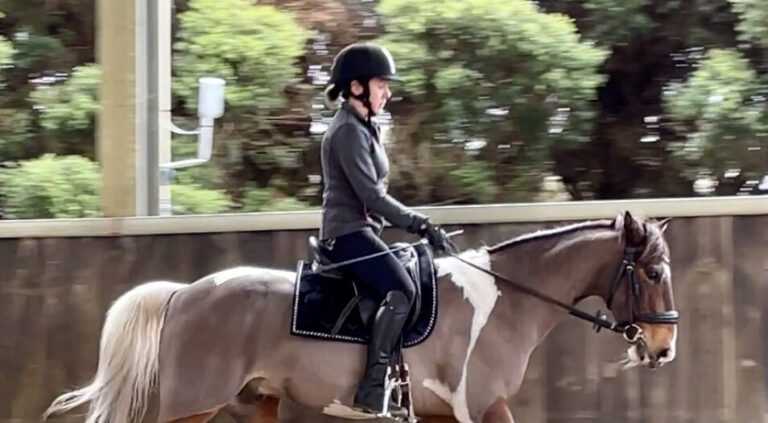A key concept for developing the horse as a good partner for dressage, or any other activity is to train in such a way that the horse learns to accept responsibility in his interactions with humans. As a Parelli Professional who also competes in dressage, I consider the horse to have four essential responsibilities in the horse–human relationship. First, we want him to accept us as humans and try not to act like a prey animal. Second, when ridden, the horse should maintain his gait unless asked otherwise by the rider. Third, the horse should maintain direction. And finally, the horse should look where he is going and be responsible for his feet.

One of my most important mentors, Linda Parelli, emphasizes that many riders don’t know the difference between holding the horse accountable and micromanaging him. For example, when a rider is constantly driving the horse forward, fiddling with his flexion and roundness, this is micromanagement and it actually prevents the horse from thinking and acting like a partner. It is obedience without desire, which has its limitations. First, the horse does not think, he just does what he’s told and second, behavioral issues tend to emerge, such as tension, spooking, bit/mouth issues, dullness, tail swishing and more. Many riders and trainers do not realize that these behaviors can be a result of mental and emotional disconnection and duress. Constant micromanagement seems to work at first, but soon the horse becomes a frustrated puppet rather than an interactive partner. This is because he never finds relief from the pressure of hands, legs and seat. Great masters know this, but the rest of us must learn it. Dressage trainer Walter Zettl would say: “Show the horse what to do and then let him do it!”
The incorporation of basic mounted arena patterns that are simple and playful in nature can be utilized to train the horse to accept responsibility in the relationship. Performance horses who understand their four essential responsibilities remain relaxed, supple and focused even in unfamiliar arenas or under the pressure of competition. In turn, work with patterns can also teach the rider to resist micromanaging the horse and instead to hold the horse accountable, promoting a better partnership.
Horses Are Pattern Animals
A key concept of Parelli Horsemanship training methods is the acknowledgement that horses learn patterns easily. It’s important to differentiate between a sequence of movements as part of a dressage test and an arena pattern introduced for the purpose of training the horse to accept responsibility. While riding a test, the rider is asking the horse to respond appropriately to specific aids at specific points in order to complete a task. The goal is for the horse to demonstrate obedience, willing cooperation and precision. We want the horse to know the movements of the test and execute them in a sequence directed by the rider.
In contrast, when using an arena pattern as an exercise to train the horse to accept responsibility, we want the horse to learn the pattern. Then, we allow the horse to do the pattern as if by himself and correct him only when he strays from the pattern. Working with the horse this way can be exciting, as it allows him to choose to work for you. This can go a long way toward developing mental willingness, a precursor to what the Germans call Durchlässigkeit—when the horse’s energy and the rider’s aids travel in a continuous circuit without resistance in any part of the horse’s body.
I suggest a couple ground rules for incorporating a new pattern into your horse’s schooling sessions:
1. School each new pattern daily for seven days or consecutive schooling sessions. This gives the horse the chance to learn the pattern.
2. Introduce only one new pattern at a time. Once a horse knows a pattern, it can be revisited frequently (every other day or every third day).
3. Treat the pattern like a game. Knowing that you’ll do many repetitions of the exercise over a week’s time—allowing the horse to learn the pattern—and then revisiting it frequently in the future takes some of the pressure off to get it right immediately.
A horse who will execute a familiar pattern willingly, with focus and minimal cues from his rider has accepted responsibility for maintaining his gait, tempo, direction and gaze within the now familiar pattern. Because horses want to move away from pressure, they seek relief and comfort, and the rider needs to learn how to offer it when the horse is doing what we want him to do. This is how he learns the pattern. Here are some ways the rider can offer relief and comfort to the horse while training patterns:
• Don’t keep the horse straight, but straighten him when he goes crooked.
• Don’t keep the horse on the line with your reins and legs. Allow your horse to “run into” these boundaries should he stray off the line.
• Correct the flexion only when your horse loses it.
• Don’t keep your horse going. Use your leg and whip (kindly!) only when the horse slows down or breaks gait.
• Don’t hold your horse back if he is going too strongly. Instead, check and release when he speeds up.
When schooling arena patterns, it is important that the moment the horse returns to the desired activity (in our case here that would be traveling the line of the pattern at the tempo set by the rider), the rider needs to release the correction and return to “neutral”—quiet riding. This is almost more important than the correction itself because this is how the horse learns that he is doing the right thing.
Here, I will share two of the arena patterns I train most frequently and the what, how and why for each.
Pattern 1: Point-to-Point
What: This exercise is based on a Parelli point-to-point mounted pattern. To begin, ride straight up the quarterline, then halt at the end of the arena without making a turn. For the rider, the initial goal of the exercise is to avoid micromanaging the horse on straight lines. For the horse, the goal is to take responsibility for maintaining his gait and direction of travel and for looking in the direction of travel (here, straight ahead). Keep in mind, it’s not about steering the horse or preventing him from getting off track. Offer the horse the direction and relief from pressure (as previously described) when he maintains direction. Correct him when he deviates, but only after he has deviated. We’re training the horse to read the rider’s intention to stay straight.
Once the horse is reliable in this exercise on the quarterline, I apply the same exercise using the short side and corners of a dressage arena. I ask the horse to travel a straight line, halt in the corner, settle and stand until directed to move off again.
How: The most important aids are the alignment of the rider’s seat and her focus. The rider should check to make sure that her shoulders are aligned with the horse’s shoulders. The horse needs to feel the rider’s seat and not change the pattern unless and until her seat releases the horse into a change of direction. Everything about the rider’s position and intention should emphasize straightness to the horse. Avoid micromanaging with the reins (to steer the horse straight). Rather, allow forward movement with the reins. If the horse makes a mistake by deviating from the straight line, use seat and leg aids to yield him back onto the line of the pattern.
During the learning process, the timing and degree of correction depend on the horse. Some horses really dislike being micromanaged by the rider. With this type of horse, I may allow him to make a bigger mistake (deviating further from the line of travel or changing the gait) and wait longer for the horse to self-correct. If he does not do so, I will provide a larger, more impactful correction. Other horses may feel lost if they are allowed to make a big mistake. This type of horse needs more guidance, so I show him the way more directly and then allow him to complete the exercise. The most common mistake riders make with pattern work is to forget to allow the horse to execute the pattern freely. Instead, show the horse what to do and then allow him to do it. You may have to repeat many times—show and then allow—but eventually the horse will figure out, “This is where I need to be.”
Why: With both variations of this pattern, I am teaching my horse his responsibility to maintain his gait and direction. I will hold him accountable for that, which utilizes the horse’s intelligence and decision-making abilities. In this way, I want to bring the horse on board as a partner.
In the more advanced variation, working on the short side and stopping in a corner, I am training the horse to ask the question: “How deep do you want me to go in the corner?” I want the horse to think this way so that as the rider, I do not always have to tell him, “Go into the corner!” Rather, with repetition, this pattern trains the horse to be responsible for traveling into the corner until he is told to halt or to bend and continue along the track. The goal is for the horse to be a partner, take responsibility and think actively no matter where he is in the arena.
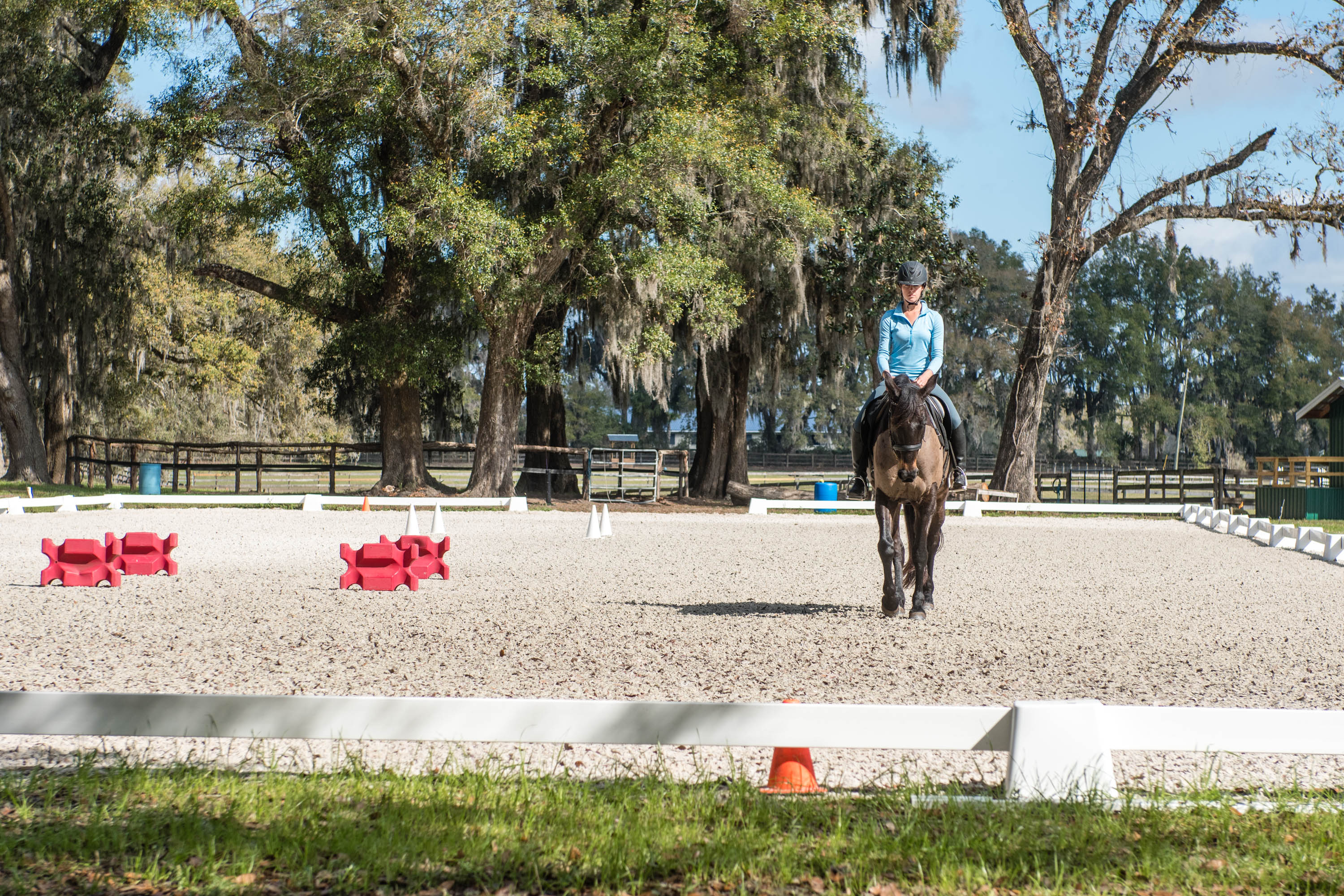
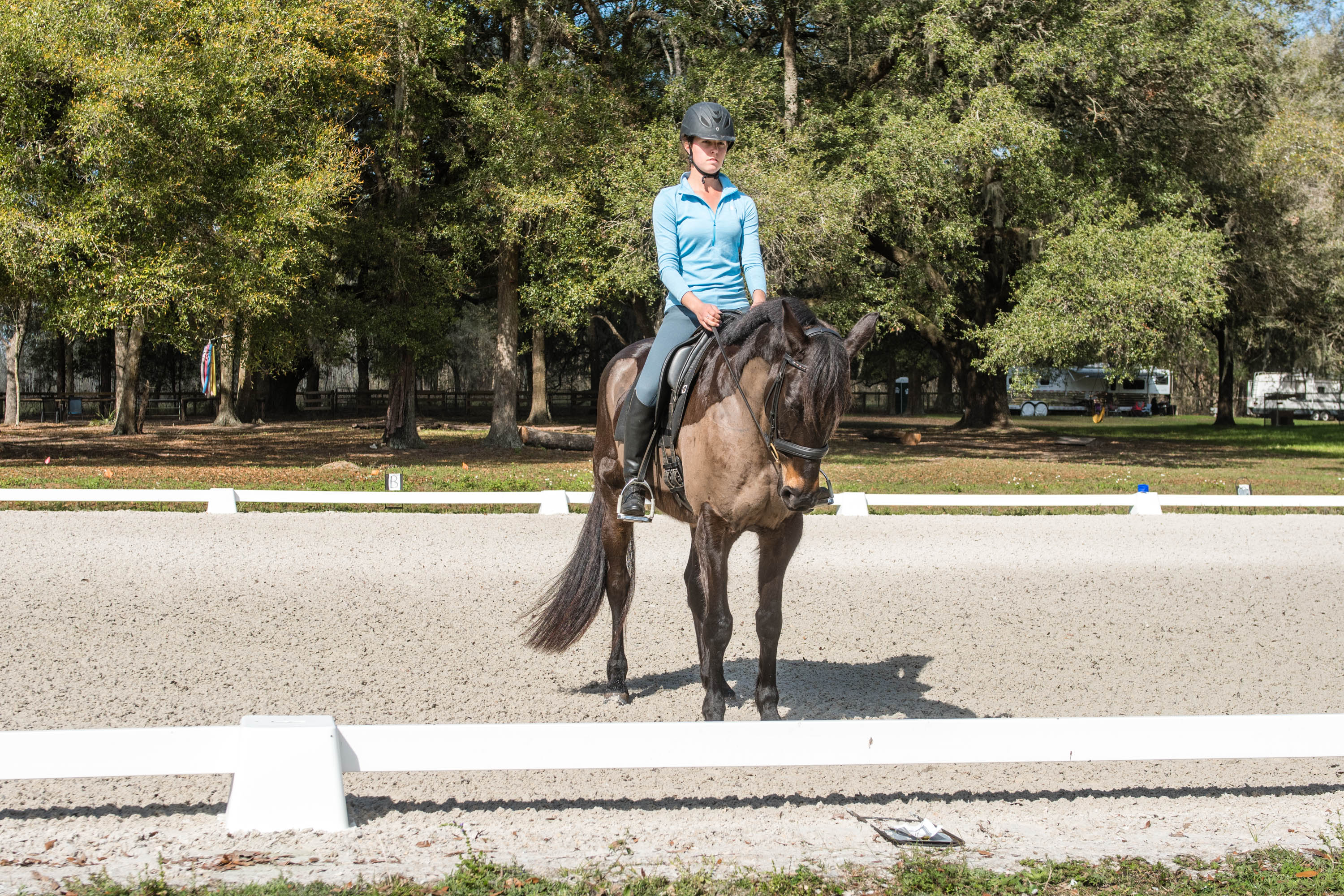
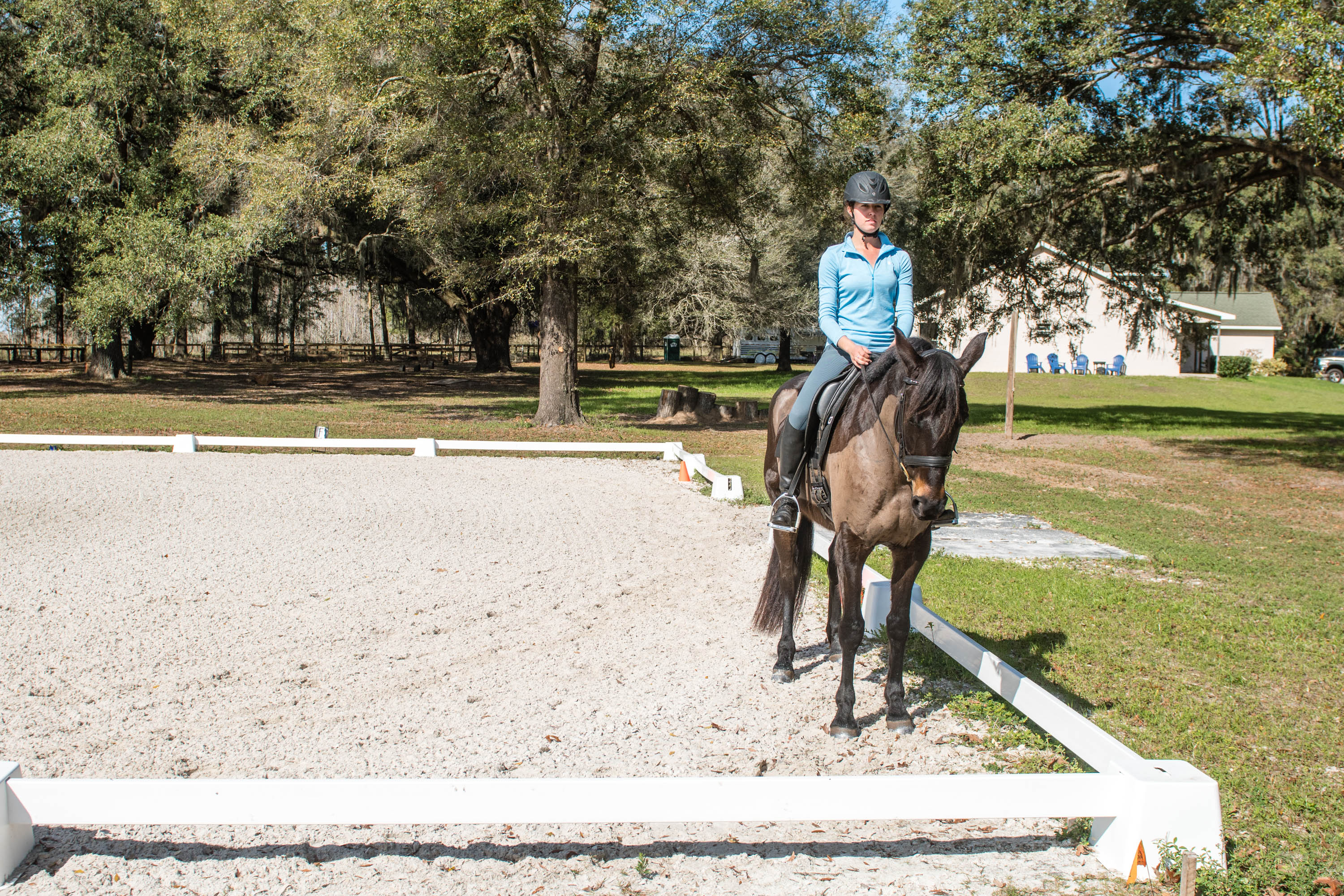
Pattern 2: The Serpentine
Question Box
What: The Serpentine Question Box involves a simple arena set-up: Eight cones form two boxes on the centerline, positioned where the horse would cross when executing a three-loop serpentine (see above photo). To begin, I ride a serpentine at walk or trot, passing through the boxes. Next, I begin incorporating the boxes into the training by asking the horse to halt within each box. Sometimes, the halt is followed by a continuation of the serpentine in the initial gait with the (likely anticipated) change of direction; other times, I do not change direction after the halt or I may change gait. There are endless variations.
The goal is always that as horse and rider approach the boxes on the centerline, the horse will ask the rider: “Now what?” As the horse becomes familiar with the pattern over time, the rider will feel a subtle “ask” from the horse as they approach the box. This question is a tiny pause on the horse’s part, where the rider briefly senses the horse asking: “Are we stopping here or are we turning?” The horse asking his rider a question feels almost like when a rider executes a half halt, but in reverse. This moment, this subtle pause, is initiated by the horse. This is the horse accepting responsibility.
How: The rider’s aids are the same as in the first pattern. Straightness in the body and seat as you approach the box is especially important as is clear focus about the direction you are heading. When you begin working with this pattern, make sure to stop in the box and stand in there long enough, so that the horse understands this is the place where the question happens. While standing, the horse should remain tuned in but settled: It’s a place of relief. If the horse won’t settle and stand, you may need to circle two or three times back into the box for him to get the idea, sometimes riding 10 circles until the horse asks: “Can I stop now?” Once the horse agrees to “hit pause” in the box, you have engaged his focus, which gives him a starting point for responsibility and partnership.
This exercise can be adapted to various levels of training. In the beginning, what happens in the box will be exaggerated: for example, a full halt and stand or maybe a significant tempo change as you ride through. Eventually, at its most refined level, it may be only the tiniest pause, like a natural half halt, that takes place in the box as you continue on your serpentine in whatever gait you’re riding. This would be something that the rider and horse feel, but that would be almost invisible to someone watching from the ground.
There are two common pitfalls to this exercise. The first is that the horse anticipates the change of direction in the box without first “asking a question” by hesitating in the box, and the rider allows it to happen. When the horse anticipates, the rider should either ask the horse to halt or continue in the original direction of travel. The second common pitfall is a rider not allowing the horse to stand still long enough to engage mentally and process the experience. Indicators that the horse has stood still long enough include licking and chewing, yawning and standing still and relaxed both with and without contact.
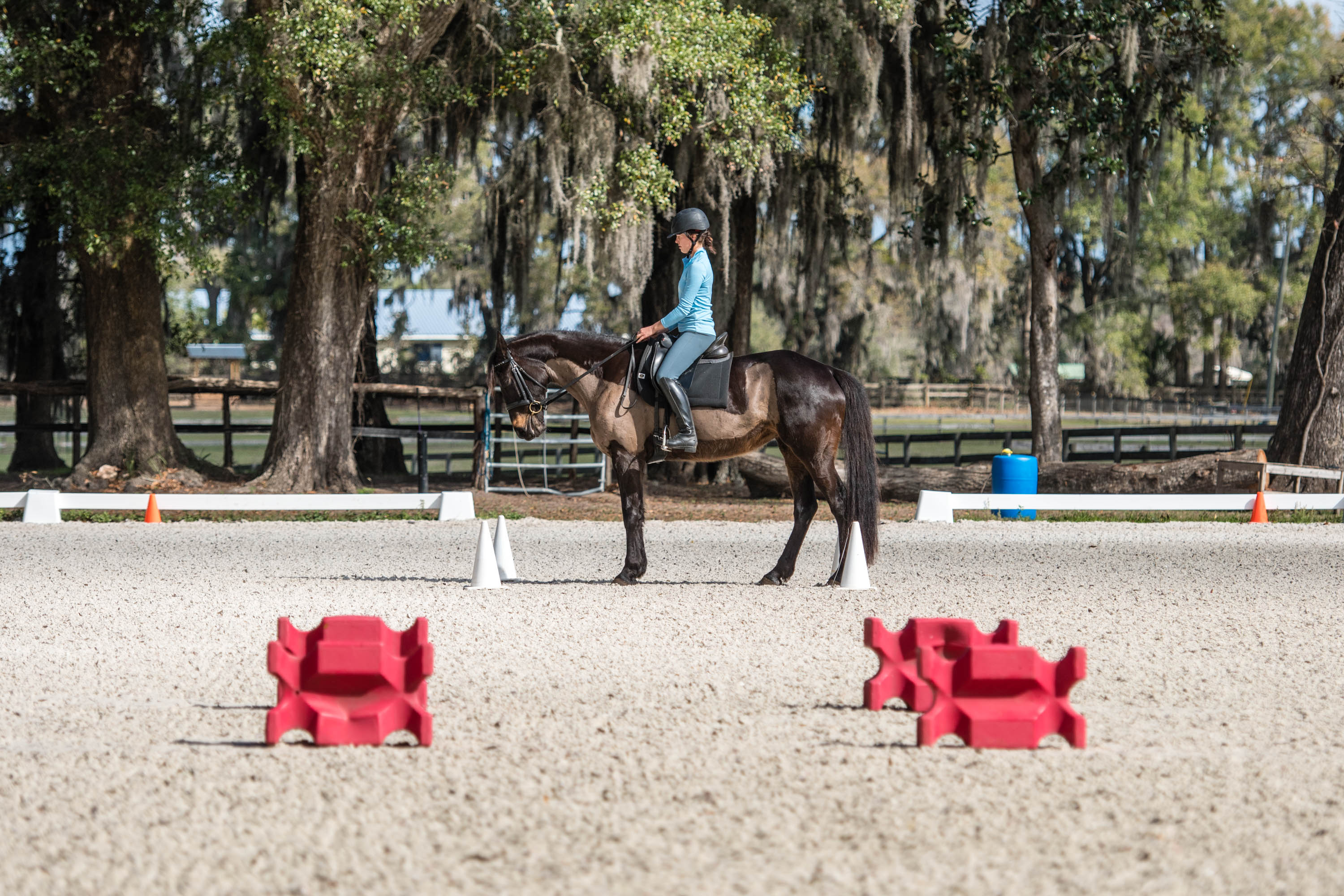
Why: This exercise is particularly useful for training people and horses to really think about what they are doing. Beginning the full halt in the box allows the rider time to shift her focus and prepare her aids for the change in direction. Simultaneously, the horse becomes mentally and emotionally available for the change.
Schooling with structured patterns is one way to help people who want to ride their own horses well, have fun and be successful. Patterns like these can support riders in problem-solving with their own horses and in shifting their mentality from that of a passenger to that of a training partner. We don’t always have to take things so seriously to meet goals and make progress with our training. Patterns help us make a game of things, but it’s a structured game that encourages learning and engagement for both riders and horses.
The End Goal
Pattern work can help all riders learn to think like trainers. As trainers, we tend to have many arrows in our quiver, so if something doesn’t go right, we just try something different and make adjustments. Often, less-experienced riders just get stuck, asking themselves what they’re doing wrong or breaking movements down into steps verbally but then finding it really difficult to execute the steps fluidly in real time. Pattern work can be a remedy for this.
“We don’t always have to take things so seriously to meet goals and make progress with our training.”
By asking the horse to engage mentally and emotionally, making the pattern a game for him, we take steps toward being more aware of one another in the rider–horse partnership. Using psychology (getting to the mind) is really hard for humans because we want to physically micromanage the horse. But if you can set the course and then hold your horse accountable, you’ll find a whole new level of interaction, attention and connection emerge. Patterns provide a structure that highlights important components of successful training: the rider showing, allowing and correcting; the horse accepting responsibility, two-way communication and, ultimately, partnership.
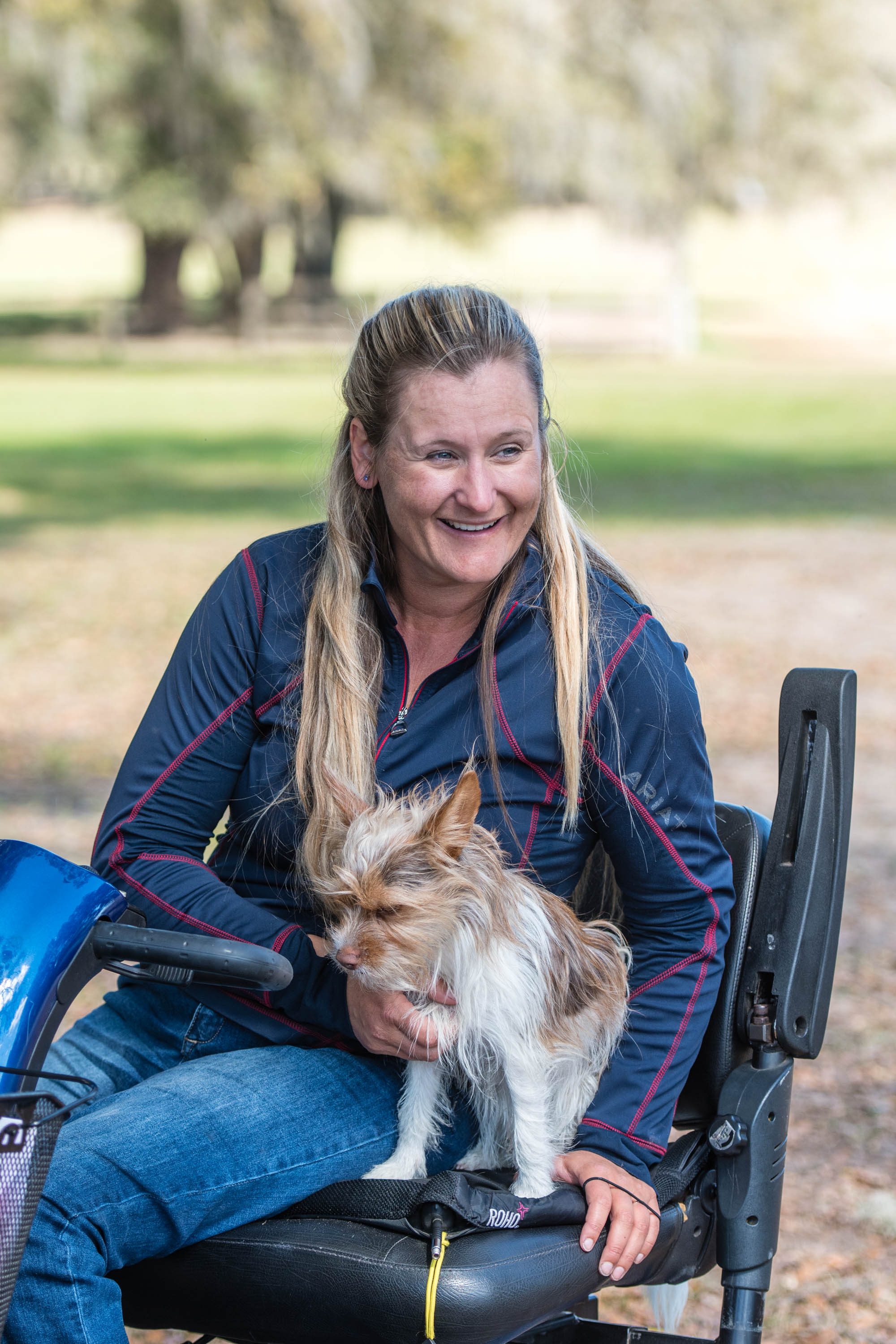
Canadian Lauren Barwick is a four-star Parelli Professional as well as a Paralympic gold and silver medalist in dressage. In addition to attending four Paralympic Games and World Equestrian Games in dressage, Barwick has successfully competed on the world stage in Para-Reining and has earned a USDF bronze medal. In light of her international achievements, she has been awarded an FEI Bronze Badge of Honor and inducted into the Canadian Disability Hall of Fame. Barwick trains and teaches from her facility in Reddick, Florida, where she lives with her fiancé and daughter. Barwick also travels to offer her trademark “Bridging the Gap” clinics, which emphasize a merging of biomechanics, natural horsemanship and dressage foundations.


